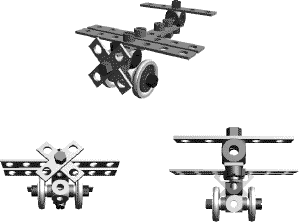
Fig. 1: Toy airplane of the experimental setting, seen from different perspectives
What makes the research centre a natural site for a workshop on metonymy is the fact that all of the dialogue corpora on which local linguists, computer scientists, engineers and psycholinguists base their descriptions, models, theories or experiments are heavily infested by metonymies and other kinds of non-literal language use. The prime source from which cases of non-literal language originate is an experimental setting, where agents had to assemble a toy airplane (see fig. 1) out of a construction kit.

Variants of this setting gave rise to a corpus of task-oriented dialogue where airplane terminology abounds, even if no real airplanes are at stake. The organisers of BI-Metonymy called these kinds of metonymy "depictional metonymies". When research on this issue was first started, scholarly interest in depictional metonymy was not overwhelming. This has greatly changed since, because research in representational matters got quite popular due to investigation in intelligent interfaces.
The aim of the workshop was to get scholars following different research lines together. Also, the general focus was not exclusively on metonymy; similes and metaphors were treated as well. Given that the explanation of all non-literal interpretation should perhaps be based on some triggering mechanism of a Gricean sort, the broader perspective suited the metonymy case very well. Roughly, the following research directions were presented in the talks:
The workshop was attended by
A paper of Johannes Dölling's who had been invited but was not able to come is included.
We group the contributions of John Barnden, Johannes Dölling and Katja Markert into the slot "general considerations"; John Barndenıs contribution is described under the heading "computational models". Johannes Dölling discusses how metonymy resolution has to be achieved and compares his approach against prominent proposals found in the current literature (Sag, Pustejovky, Hobbs, Nunberg, Copestake and Briscoe, Egg).
Katja Markert investigated which parameters have to be considered within a descriptively ambitious metonymy theory and provided examples for each. One can take it for granted that violation of selectional restrictions, world knowledge, lexical knowledge, conventionalised metonymical readings and the discourse context offer clues to the understanding of metonymies as do morphosyntactic features and established pragmatical conditions.
Starting from the observation that non-literal language use has its conditions of truth, felicity and success, several researchers used logical systems as a tool of investigation and description. Classical type logic is the point of departure for Josef van Genabithıs treatment of metaphors which he regards as reduced similes. Roughly the same data are discussed by Carl Vogel whose perspective, however, differs from van Genabithıs in at least two respects: Metaphors are taken as extensions of sense and a variant of Dynamic Semantics is used for describing them. Markus Egg approaches metonymies from the point of view of reinterpretation and uses a logic of underspecification originally designed for the description of quantifier scope, anaphora and ellipsis (CLLS) to reconstruct their meaning. Reinterpretation is triggered by violation of sortal specification and other clashes of information.
Depictional metonymies and their embedding in discourse were handled in the contributions of Ichiro Umata and Josef Meyer-Fujara and Hannes Rieser. Ichiro Umata and his colleagues investigated language use in communication settings involving graphics, especially resolution of reference found there. They point out reference phenomena which so far no one was aware of. Meyer-Fujara and Rieser also favoured logical reconstruction. Concentrating on model set-up, they argued that depictional metonymies have to be given some sort of two-tiered semantics due to the fact that depicting objects are semiotic signs.
Turning to "computational models", two implemented systems were discussed: Working with his system ATT-Meta designed to reconstruct the understanding of metaphors, John Barnden treated issues of interest for the set-up of general theories of metaphor and metonymy. Ruth Fuchss and Sebastian Padó described an implementation of some of Markus Eggıs reinterpretation mechanisms. In addition, they laid out the central features of the underspecification component of CLLS.
So much for the differences in the approaches taken. However, at least at the end of the workshop, there was considerable agreement on central issues concerning theories of non-literal language use. John Barnden took the trouble of commenting upon the net results of the workshop in his synopsis and to work out points of convergence.
Stralsund and Bielefeld, December 2000 Josef Meyer-Fujara and Hannes Rieser